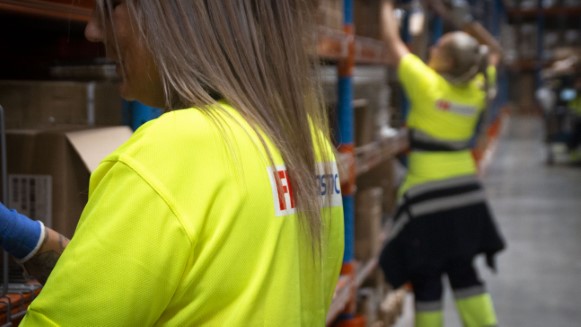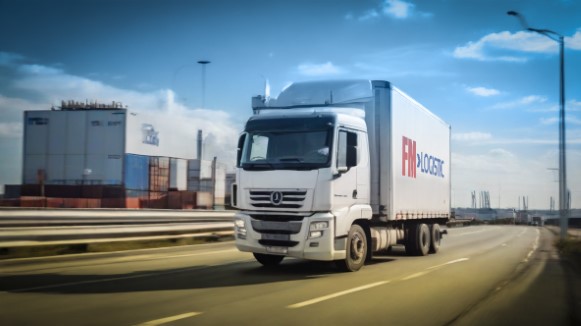In the dynamic world of logistics management, efficiency in key processes such as picking and packing is essential to ensure timely and accurate delivery of products to end customers. In this article, we will explore the concepts of picking and packing in depth, highlighting the importance of these processes in the logistics flow and how they contribute to operational excellence. In addition, we will examine how FM Logistic – a global logistics operator, employs specialized logistics solutions to optimize these critical phases, ensuring an agile supply chain adapted to market needs.
What is picking?
Picking is an essential process in the supply chain that involves the selection and picking of specific products from a warehouse to fulfill customer orders. This crucial step ensures accuracy and efficiency in product distribution and is fundamental to FM Logistic’s logistics.
What is the picking process?
The picking process involves the identification, location and extraction of stored products. From order receipt to delivery, it is carried out using advanced technologies, such as warehouse management systems and scanning devices, optimizing speed and reducing errors.
Picking examples
Examples of picking include voice picking, where operators receive instructions through audio devices to select products, and light picking, which uses light indicators to guide workers to the correct items in the warehouse. Also, batch picking groups multiple orders into a single process, increasing efficiency in picking multiple shipments simultaneously. These methods highlight the diversity of approaches that companies, such as FM Logistic, can employ to optimize their picking operations.
What is packing?
Packing, also known as packaging, refers to the process of preparing and packing products in an adequate manner for transportation, warehousing and logistics services management or distribution. This step in the supply chain ensures that products arrive at their final destination in optimal conditions and in compliance with safety standards. In the logistics context, packing involves selecting the right type of packaging, ensuring that products are properly protected and labeled, and organizing them efficiently to facilitate their handling and your freight forwarding service. An efficient packing process is essential to ensure the integrity of the goods and optimize distribution logistics.
What is done in packing?
In the packing process, several essential activities are carried out to prepare products for shipment or distribution. These include:
- Selection of packaging: The appropriate type of packaging is chosen for the products, considering their nature, size and fragility.
- Product protection: Ensures that products are properly protected from damage during transport. This may involve the use of padding materials, such as foam or bubbles, to prevent shocks or breakage.
- Labeling and marking: Each package is properly labeled with relevant information, such as shipping address, barcodes, and any other labels necessary for identification and tracking.
- Efficient organization: Space in the container or pallet is organized efficiently to maximize cargo capacity and facilitate handling during transport.
- Documentation: Necessary documentation, such as invoices and customs documents, is completed to meet legal requirements and facilitate customs clearance if necessary.
Examples of packing
Examples of packing techniques include:
- Bulk packaging: Suitable for solid, liquid or granular products that are transported in large quantities, such as cereals or chemical products. Bulk containers or sacks are used.
- Primary and secondary packaging: Primary packaging is closest to the product, such as a beverage bottle. Secondary packaging groups several primary packages together for ease of handling and transportation, such as cartons containing individual bottles.
- Protective packaging: Protective materials, such as foam, bubbles or pads, are used to wrap and secure fragile products, such as electronics or glassware.
- Flexible packaging: Flexible bags or containers are used for products such as snacks, coffee or pharmaceuticals. They offer versatility and save space.
- Eco-friendly packaging: Sustainable and recyclable packaging is used to minimize environmental impact, such as recycled cardboard boxes or biodegradable materials.
Differences between picking and packing
The main differences between packing and picking are:
Picking: Refers to the process of selecting and picking specific products from a warehouse to fulfill customer orders.
Packing: Involves the preparation and packaging of selected products for shipment or distribution, ensuring that they are properly protected and labeled.
Picking: Occurs in the initial phase of the chain, in the warehouse, when products are extracted from inventory.
Packing: Occurs after picking and precedes shipping, since it involves the final preparation of the products before leaving the warehouse.
Picking: Includes identifying, locating and extracting products according to orders, using management systems and technologies to optimize efficiency.
Packing: Involves selecting the right type of packaging, protecting the products, labeling them and organizing them efficiently for transport.
Picking: Ensure accuracy and speed in picking products to fulfill orders efficiently.
Packing: Ensure that products are properly protected, labeled and organized for transportation, maintaining the integrity of the merchandise.
Are picking and packing in a warehouse related?
Yes, picking and packing are closely related in a warehouse, forming an integral part of logistics management. These two processes are usually followed sequentially to prepare and ship products efficiently:
In the picking phase, products are selected and picked from inventory according to specific customer orders. Operators use warehouse management systems and technologies such as scanners to optimize picking and ensure accuracy.
After the products have been picked in the picking process, packing begins. In packing, the selected products are packed and prepared for shipment. This involves choosing the right packaging, protecting the products and labeling them correctly.
The efficiency of picking execution directly impacts the effectiveness of packing. Accurate and fast picking provides accurate products for packing, ensuring that the products are ready for shipment in a proper manner. Effective coordination between these two phases is essential to achieve a smooth supply chain and meet delivery deadlines.





